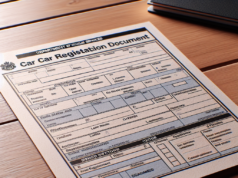Contents
- 1 Understanding the Current Landscape of Safety Regulations in Various Industries
- 2 Identifying the Hidden Dangers Posed by Inadequate Safety Measures
- 3 The Impact of Lax Regulations on Workers’ Health and Public Safety
- 4 Case Studies: Lessons Learned from Past Safety Failures and Accidents
- 5 Advocating for Stricter Safety Regulations: Key Stakeholders and Their Roles
- 6 The Path Forward: Implementing Effective Safety Standards for a Safer Future

In an era where industrial growth and technological advancement are at an all-time high, the importance of stringent safety regulations cannot be overstated. Despite the progress made in various sectors, a concerning trend of inadequate safety measures persists, exposing workers and the public to significant risks. This article delves into the current landscape of safety regulations, identifies hidden dangers, examines the repercussions of lax oversight, and advocates for a more robust regulatory framework to ensure a safer working environment for all.
Understanding the Current Landscape of Safety Regulations in Various Industries
Safety regulations vary widely across industries, with some sectors, such as construction and manufacturing, subject to stringent oversight, while others, like gig economy platforms and emerging tech industries, often operate under looser guidelines. Regulatory bodies, including the Occupational Safety and Health Administration (OSHA) in the United States, have established frameworks designed to protect workers from hazards. However, the enforcement of these regulations can be inconsistent, and many companies prioritize profit over safety compliance. Furthermore, the rapid evolution of technology and work practices often outpaces the development of corresponding regulations, leaving gaps that can jeopardize worker safety and public health.
Identifying the Hidden Dangers Posed by Inadequate Safety Measures
Inadequate safety measures can lead to a myriad of hidden dangers that may not be immediately apparent. For instance, insufficient training for employees can result in improper handling of machinery, leading to accidents that could have been easily prevented. Additionally, the lack of proper safety equipment, such as personal protective gear, exposes workers to hazardous environments, increasing the risk of injury or illness. Psychological hazards, including workplace stress and harassment, are often overlooked in safety assessments, yet they can have severe long-term effects on employee well-being. These hidden dangers underscore the urgent need for comprehensive safety evaluations that address not only physical risks but also mental health considerations.
The Impact of Lax Regulations on Workers’ Health and Public Safety
The consequences of lax safety regulations extend beyond individual workers, affecting entire communities and industries. When companies cut corners on safety, the likelihood of workplace accidents increases, leading to injuries, fatalities, and long-term health issues for employees. Moreover, the repercussions can ripple through society, as injured workers may require medical care, disability support, and rehabilitation services, placing a burden on public health systems. In extreme cases, catastrophic events, such as industrial explosions or chemical spills, can have devastating effects on surrounding populations, leading to environmental damage and public outrage. The economic costs associated with these incidents can be staggering, highlighting the need for a proactive approach to safety regulation.
Case Studies: Lessons Learned from Past Safety Failures and Accidents
Several high-profile safety failures serve as stark reminders of the consequences of inadequate regulations. The Deepwater Horizon oil spill in 2010, one of the largest environmental disasters in U.S. history, was attributed to a series of safety oversights and regulatory failures. Similarly, the Rana Plaza collapse in Bangladesh in 2013, which claimed over 1,100 lives, exposed the dire conditions faced by garment workers and the lack of enforcement of building safety codes. These incidents prompted widespread calls for reform, yet many industries continue to operate under outdated regulations. By analyzing these case studies, stakeholders can identify critical lessons and implement necessary changes to prevent future tragedies.
Advocating for Stricter Safety Regulations: Key Stakeholders and Their Roles
The push for stricter safety regulations involves a coalition of stakeholders, including government agencies, industry leaders, labor unions, and advocacy groups. Government bodies must take the lead in establishing and enforcing comprehensive safety standards, ensuring that regulations keep pace with technological advancements and emerging risks. Industry leaders play a crucial role in fostering a culture of safety within their organizations, prioritizing compliance and employee training. Labor unions and advocacy groups are essential in raising awareness about safety issues, lobbying for stronger regulations, and representing the voices of workers who may feel powerless in the face of corporate interests. Collaboration among these stakeholders is vital to create a unified front advocating for a safer working environment.
The Path Forward: Implementing Effective Safety Standards for a Safer Future
To pave the way for a safer future, it is imperative to implement effective safety standards that are adaptable and responsive to the evolving landscape of work. This includes regular reviews and updates of existing regulations, incorporating input from workers and industry experts to ensure that safety measures are practical and relevant. The integration of technology, such as real-time monitoring systems and data analytics, can enhance safety oversight and facilitate proactive risk management. Additionally, fostering a culture of safety that empowers employees to voice concerns and participate in safety initiatives can lead to improved compliance and a more engaged workforce. By prioritizing safety as a fundamental aspect of business operations, industries can not only protect their workers but also contribute to a healthier and more sustainable society.
The need for stricter safety regulations is more pressing than ever as industries navigate the complexities of modern work environments. By understanding the current landscape, identifying hidden dangers, and learning from past failures, stakeholders can advocate for and implement robust safety standards that protect workers and the public alike. A collective commitment to safety will not only mitigate risks but also foster a culture of accountability and care, ultimately leading to a safer and more productive future for all.























